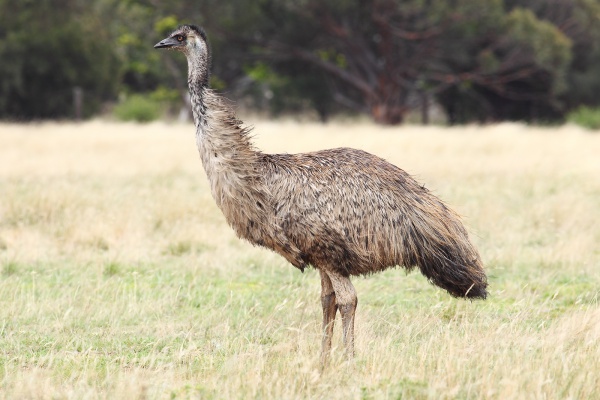Facts About Emu
The emu, a bird indigenous to Australia, is the second-largest living bird by height, surpassed only by the ostrich. These soft-feathered, flightless birds can stand up to 1.9 meters tall and are easily identifiable by their long necks and legs, along with their brown plumage. Emus are impressive runners, capable of reaching high speeds and covering vast distances.
The breeding season for emus occurs in May and June, with the males taking on the responsibility of incubating the eggs. The emu is a significant symbol in Australia, prominently featured on the country's coat of arms and various coins. It also holds an important place in Indigenous Australian mythology.
The emu was first documented by Europeans in the late 17th century and was later named *Dromaius novaehollandiae*. Initially classified with cassowaries in the family Casuariidae, recent genetic studies suggest they belong to a distinct family, Dromaiidae. Australia once had various subspecies of emus, but some became extinct following European settlement. Today, emus are found across mainland Australia, primarily in savannah woodlands and forested areas.
Emus are diurnal, spending their daytime hours foraging for plants and insects. They often travel long distances in search of food and water. Uniquely among birds, male emus are the primary caregivers, taking care of both the eggs and the young. Despite their size, emus face threats from predators like dingoes and eagles, and they can also suffer from various parasites.
Historically, emus were hunted by Indigenous Australians and early settlers for their meat, fat, and other resources. Today, emus are farmed commercially for their meat, oil, leather, and feathers. Emu oil, derived from their fat, is used in cosmetics and dietary supplements, while their leather, known for its unique patterned surface, is used in various products. Emus hold cultural significance in Australian Aboriginal mythology and are unofficially considered the national bird of Australia.
Emus are not endangered, with a stable population estimated between 630,000 and 725,000. However, local populations do face threats such as habitat loss, deliberate killing, and vehicle collisions. Emus are protected under the Environment Protection and Biodiversity Conservation Act 1999. Despite some localized risks, the emu's overall conservation status is considered of least concern by the International Union for Conservation of Nature.
